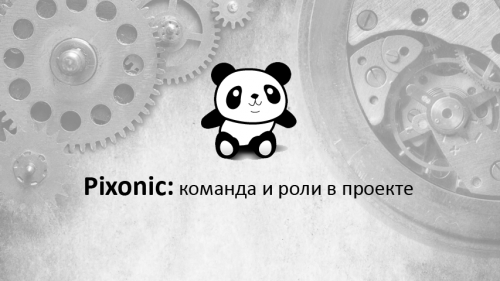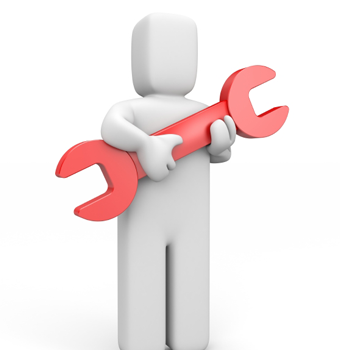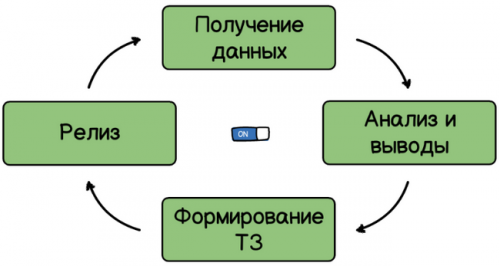Pixonic Seminars: Team and roles in the project
This week, Pixonic continued to publish the results (in fact, summaries) of training seminars that it conducts for its own employees in its blog. Now you can get acquainted with them on our pages.

Roles, in general, depend on the dynamics of the expansion of the project and the team. You can have a small team where a game designer performs the tasks of a producer, PM and analyst – all in one. Or you can have a bigger team in which these functions are distributed among different people. The main thing is to understand correctly what functions are needed at each stage of the project development, and how they are combined / distributed when scaling the team.
Below is a summary of similar features for several Pixonic project teams. Look, how would you formulate areas of responsibility within your teams?
Part [1/2] – Team and roles in the projectRoles in the project
Producer – responsible for deadlines, budget, KPIs, team (hiring/firing), game concept\balance, project organization.
- The game designer is responsible for game design, UI, balance, plot, game features, concept, etc.
- PM – responsible for deadlines, budget and team (hiring/firing).
You need to identify your strengths and weaknesses. Weaknesses are covered by hiring professionals.
If a PM wants to become a producer, he needs to learn game design, if a game designer wants to become a producer, he needs to learn management.
The composition of the project team and responsibilityArt – Art lead\art director + performers (+UI);
- Code – tech lead\tech dir + performers;
- QA – QA Lead+ performers (translation quality is included);
- Support\community\translations;
- Everything else – marketing\analytics is provided by the company;
- The producer is responsible for everything*!
*The producer makes sure that all of the above functions and the team members interact correctly. He appoints and supervises supervisors. If a producer sees problems, he either solves them, or promptly reports a (possible) problem to his supervisor, seeking to develop a joint solution.How the project is growing
A developing project with an overabundance should be provided with tasks from game designers (managers);
- If the development team (+QA) does not have time* to perform these tasks, then the team should be increased;
- If the art team does not have time, it is necessary to increase it;
- If there are not enough tasks, then it is necessary to increase the number of ** game designers (managers);
- Next, point 1.
* It’s about deadlines. If the team is not able to produce the necessary quality in principle (due to an acceptable increase in terms), then it is not expanded, but “restructured”. **The professionalism of designers lies in setting appropriate and thoughtful tasks (with competent technical specifications). The producer makes sure that all of the above functions and the team members interact correctly (including the producer supervises the controllers).
If a producer sees problems, he either solves them, or promptly reports a (possible) problem to his supervisor, seeking to develop a joint solution.
Part [2/2] – Postproduction: revision, new features and contentWhen working on a game in the post-production stage, you have, roughly speaking, three tools in your arsenal:
- Modification;
- Introduction of new features;
- Adding content.
Revision (Improvement/Correction/Change)Correction, alteration of something already available in the game.

For example, changing/adding a tutorial, simplifying the UI, redrawing the balance, fixing bugs.Before launching any game, the analytics team, together with the producer, sets the parameters to which it must correspond: Retention, ARPU, NPU, LTV, etc.
If the indicators are bad after the launch, time is given to finalize the game in order to achieve the required indicators. New features are not introduced into the game! If it is not possible to finalize the basis, the game is closed. After all, if the basis of the project does not work, then layering something new on it is unlikely to save the situation. (Nor will the superstructure of an additional floor help a building that has a bad and crumbling foundation)
Introduction of new features (Intensive development)Introduction of new mechanics and functionality into the game.

For example, clans, clan wars, event system, rating, crafting/fishing/leveling/whomever you like.When developing and entering each feature, together with analysts, it is determined how much and which parameter should be increased.
Sometimes, such indicators as reviews, or the number of interactions with mechanics per player per day, etc. are set as KPIs.
If a feature does not reach the target, it is being finalized, new features are not introduced into the game. If the feature still doesn’t work after 2-3 alterations, then either the feature is not needed in the game, or the project has a bad game design.
Adding content (Extensive development)Adding content based on existing functionality.

For example, adding new quest packs, events, weapons, etc.If you introduce new content into the game, then this is done based on data on existing content.
Together with analysts, you need to understand which product options (quest packs, weapons, events, promotions, etc.) have shown themselves best, understand the reasons for this and create content with similar characteristics. Thus, the average quality of game content on the project will increase (and not deteriorate or stand still).
MoralIf design decisions are made based on experience when developing a project, then in post-production development should focus on objective data, which is obtained primarily through analytics. I.e., during development, you made a game based on hypotheses about how the player will perceive the game, in post-production you check how much your hypotheses are they turned out to be correct.
And under the influence of new information, you make adjustments to the existing or planned design of the game. And this process is iterative:

Previous publications on the topic:Pixonic Seminars: about choosing a concept